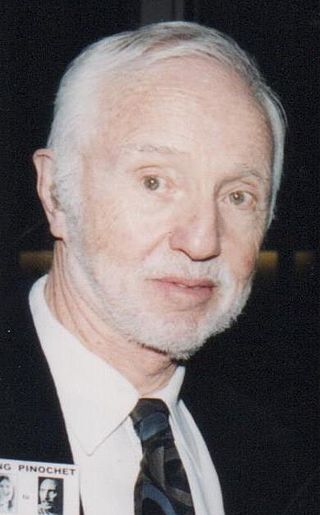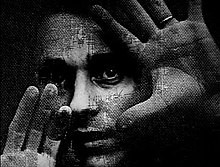
Francis Ford Coppola is an American film director, producer, and screenwriter. He is considered one of the leading figures of the New Hollywood film movement and is widely considered one of the greatest directors of all time. Coppola is the recipient of five Academy Awards, six Golden Globe Awards, two Palmes d'Or, and a BAFTA Award.

George Walton Lucas Jr. is an American filmmaker and philanthropist. He created the Star Wars and Indiana Jones franchises and founded Lucasfilm, LucasArts, Industrial Light & Magic and THX. He served as chairman of Lucasfilm before selling it to The Walt Disney Company in 2012. Nominated for four Academy Awards, he is considered to be one of the most significant figures of the 20th-century New Hollywood movement, and a pioneer of the modern blockbuster. Despite this, he has remained an independent filmmaker away from Hollywood for most of his career.

Stop motion is an animated filmmaking and special effects technique in which objects are physically manipulated in small increments between individually photographed frames so that they will appear to exhibit independent motion or change when the series of frames is played back. Any kind of object can thus be animated, but puppets with movable joints or plasticine figures are most commonly used. Puppets, models or clay figures built around an armature are used in model animation. Stop motion with live actors is often referred to as pixilation. Stop motion of flat materials such as paper, fabrics or photographs is usually called cutout animation.

THX 1138 is a 1971 American social science fiction film co-written and directed by George Lucas in his directorial debut. Produced by Francis Ford Coppola and co-written by Walter Murch, the film stars Robert Duvall and Donald Pleasence, with Don Pedro Colley, Maggie McOmie, and Ian Wolfe in supporting roles. The film is set in a dystopian future in which the citizens are controlled by android police and mandatory use of drugs that suppress emotions.

An independent film, independent movie, indie film, or indie movie is a feature film or short film that is produced outside the major film studio system in addition to being produced and distributed by independent entertainment companies. Independent films are sometimes distinguishable by their content and style and how the filmmakers' artistic vision is realized. Sometimes, independent films are made with considerably lower budgets than major studio films.

The Star Wars science fiction media franchise is acknowledged to have been inspired by many sources. These include Hinduism, Buddhism, Qigong, philosophy, classical mythology, Roman history, Gnosticism, Zoroastrianism, parts of the other Abrahamic religions, Confucianism, Shintō and Taoism, and countless cinematic precursors. Creator George Lucas stated "Most of the spiritual reality in the movie[s] is based on a synthesis of all religions. A synthesis through history; the way man has perceived the unknown and the great mystery and tried to deal with that or dealing with it".

American Zoetrope is a privately run American film production company, centered in San Francisco, California and founded by Francis Ford Coppola and George Lucas.

Adolfas Mekas was a Lithuanian-born American filmmaker, writer, director, editor, actor and educator. With his brother Jonas Mekas, he founded the magazine Film Culture, as well as the Film-Makers' Cooperative and was associated with George Maciunas and the Fluxus art movement at its beginning. He made several short films, culminating in the feature Hallelujah the Hills in 1963, which was played at the Cannes Film Festival of that year and is now considered a classic of American film.

Tucker: The Man and His Dream is a 1988 American biographical comedy-drama film directed by Francis Ford Coppola, starring Jeff Bridges as inventor Preston Tucker. The film recounts Tucker's story and his attempt to produce and market the Tucker 48, which was met with scandal between the Big Three automobile manufacturers and accusations of stock fraud from the U.S. Securities and Exchange Commission. Joan Allen, Martin Landau, Elias Koteas, Frederic Forrest and Christian Slater appear in supporting roles. For his performance, Landau was nominated for the Academy Award and won the Golden Globe Award for Best Supporting Actor.

Arthur Lipsett was a Canadian filmmaker with the National Film Board of Canada. His short, avant-garde collage films, which he described as "neither underground nor conventional”, contain elements of narrative, documentary, experimental collage, and visual essay. His first film, Very Nice, Very Nice, was nominated for an Academy Award.

Dennis Muren, A.S.C is an American film visual effects artist and supervisor. He has worked on the films of George Lucas, Steven Spielberg, and James Cameron, among others, and has won nine Oscars in total: eight for Best Visual Effects and a Technical Achievement Academy Award. The Visual Effects Society has called him "a perpetual student, teacher, innovator, and mentor."

Haskell Wexler was an American cinematographer, film producer, and director. Wexler was judged to be one of film history's ten most influential cinematographers in a survey of the members of the International Cinematographers Guild. He won the Academy Award for Best Cinematography twice, in 1966 and 1976, out of five nominations. In his obituary in The New York Times, Wexler is described as being "renowned as one of the most inventive cinematographers in Hollywood."

George Lucas in Love is a 1999 American parodical short film directed by Joe Nussbaum. A parody of Shakespeare in Love, it depicts a young George Lucas and his real-life inspirations behind the characters and plot of Star Wars. Upon its release, the film was widely passed around Hollywood offices and served as Nussbaum’s break into the film industry. Lucas himself reacted to the film positively.
Marcia Lou Lucas is an American film editor. She is best known for her work editing the Star Wars trilogy (1977–1983) as well as other films by her then-husband George Lucas: THX-1138 (1971) and American Graffiti (1973). She also edited Martin Scorsese's Alice Doesn't Live Here Anymore (1974), Taxi Driver (1976), and New York, New York (1977).
Filmmaker, or "Filmmaker: a diary by george lucas", is a 32-minute documentary made in 1968 by George Lucas about the making of Francis Ford Coppola's 1969 film The Rain People.
Willard Miller Huyck, Jr. is an American retired screenwriter, director and producer, best known for his association with George Lucas.
John Korty, was an American film director and animator, best known for the television film The Autobiography of Miss Jane Pittman and the documentary Who Are the DeBolts? And Where Did They Get Nineteen Kids?, as well as the theatrical animated feature Twice Upon a Time. He has won an Academy Award for Best Documentary Feature and several other major awards. He is described by the film critic Leonard Maltin as "a principled filmmaker who has worked both outside and within the mainstream, attempting to find projects that support his humanistic beliefs".
George Cooper Stevens Jr. is an American writer, playwright, director, and producer. He is the founder of the American Film Institute, creator of the AFI Life Achievement Award, and co-creator of the Kennedy Center Honors. He has also served as Co-Chairman of the President's Committee on the Arts and Humanities.

Drew Struzan is an American artist, illustrator and cover designer. He is known for his more than 150 movie posters, which include The Shawshank Redemption, Blade Runner, E.T. the Extra-Terrestrial, as well as films in the Indiana Jones, Back to the Future, and Star Wars film series. He has also painted album covers, collectibles, and book covers.
A still image film, also called a picture movie, is a film that consists primarily or entirely of still images rather than consecutive still images in succession, forgoing the illusion of motion either for aesthetic or practical reasons. These films usually include a standard soundtrack, similar to what is found in typical sound films, complete with music, sound effects, dialogue or narration. They may also use various editing techniques found in traditional films, such as dissolves, zooms, and panning.














